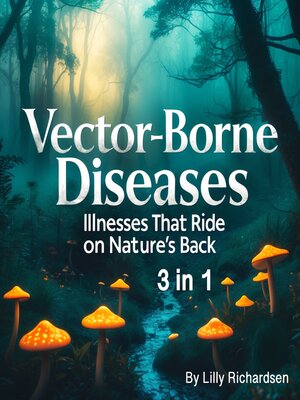Vector-Borne Diseases
audiobook (Unabridged) ∣ Illnesses That Ride on Nature's Back (3 in 1)
By Lilly Richardsen

Sign up to save your library
With an OverDrive account, you can save your favorite libraries for at-a-glance information about availability. Find out more about OverDrive accounts.
Find this title in Libby, the library reading app by OverDrive.



Search for a digital library with this title
Title found at these libraries:
| Library Name | Distance |
|---|---|
| Loading... |
Vector-borne diseases represent one of the most complex and challenging frontiers of global health. These infections, transmitted through the bites of mosquitoes, ticks, and other arthropod vectors, affect hundreds of millions of people annually and have shaped human history, migration patterns, and societal development for millennia. This comprehensive exploration delves into three of the most significant vector-borne threats—Malaria, Dengue Fever, and Lyme Disease—illuminating the sophisticated biological mechanisms, ecological dynamics, and human factors that enable these pathogens to transcend the boundaries between wildlife ecosystems and human communities.
The story of vector-borne diseases is fundamentally a narrative of ecological relationships, where microscopic parasites and pathogens have evolved remarkable strategies to navigate between arthropod vectors and human hosts. By examining the intricate life cycles, transmission dynamics, clinical manifestations, and global impact of these diseases, this book unveils the multifaceted challenges they present to modern medicine and public health. Readers will journey through diverse landscapes—from tropical regions where Anopheles mosquitoes transmit the ancient scourge of malaria to suburban forests where ticks harbor the bacteria causing Lyme disease—discovering how climate change, urbanization, and human behavior continue to reshape the epidemiological patterns of these persistent threats. Through scientific insight, historical context, and forward-looking analysis, we explore not only the biological complexity of these pathogens but also the innovative strategies being developed to control vectors, prevent transmission, and ultimately reduce the tremendous burden these diseases impose on human communities worldwide.







